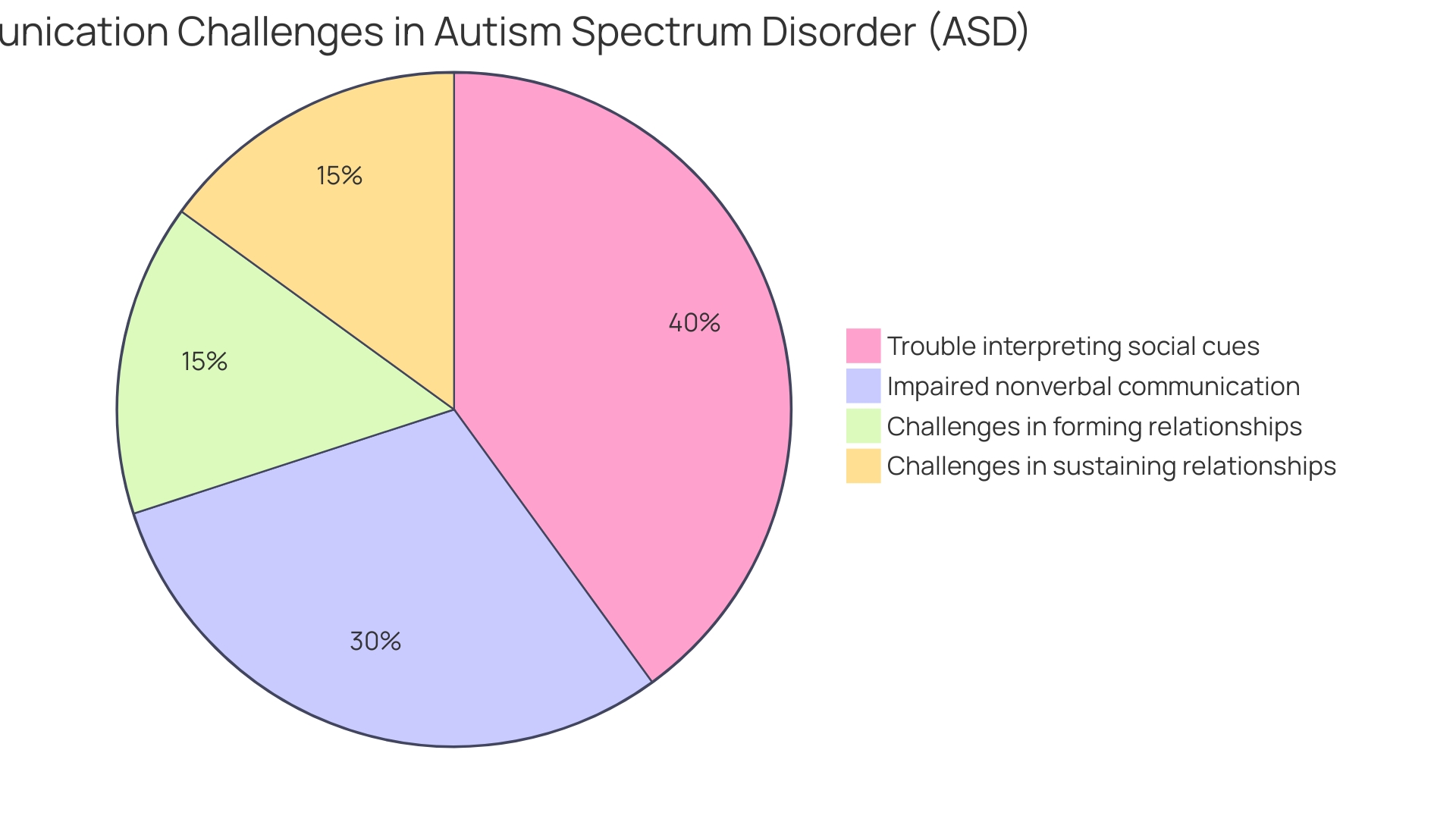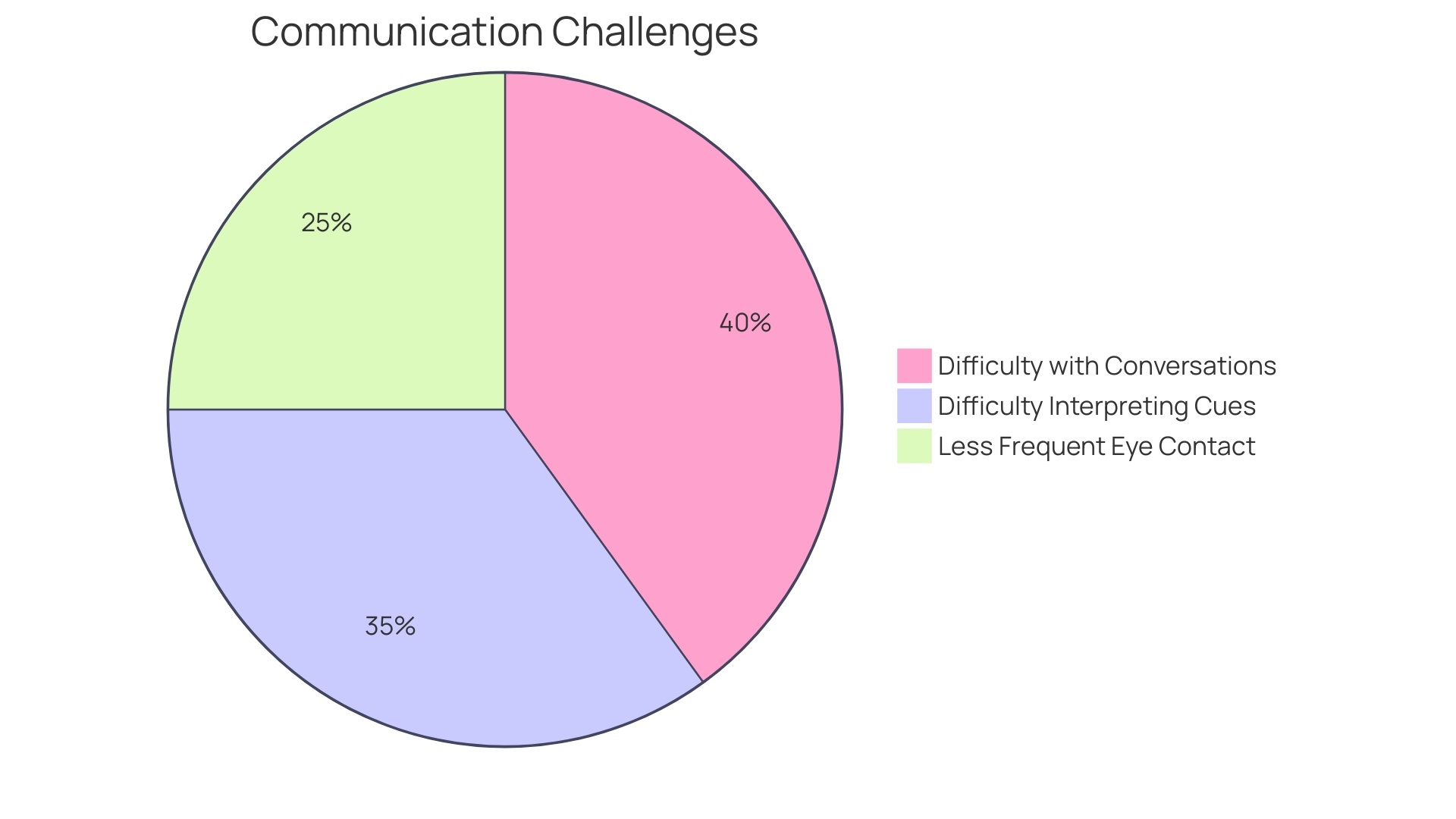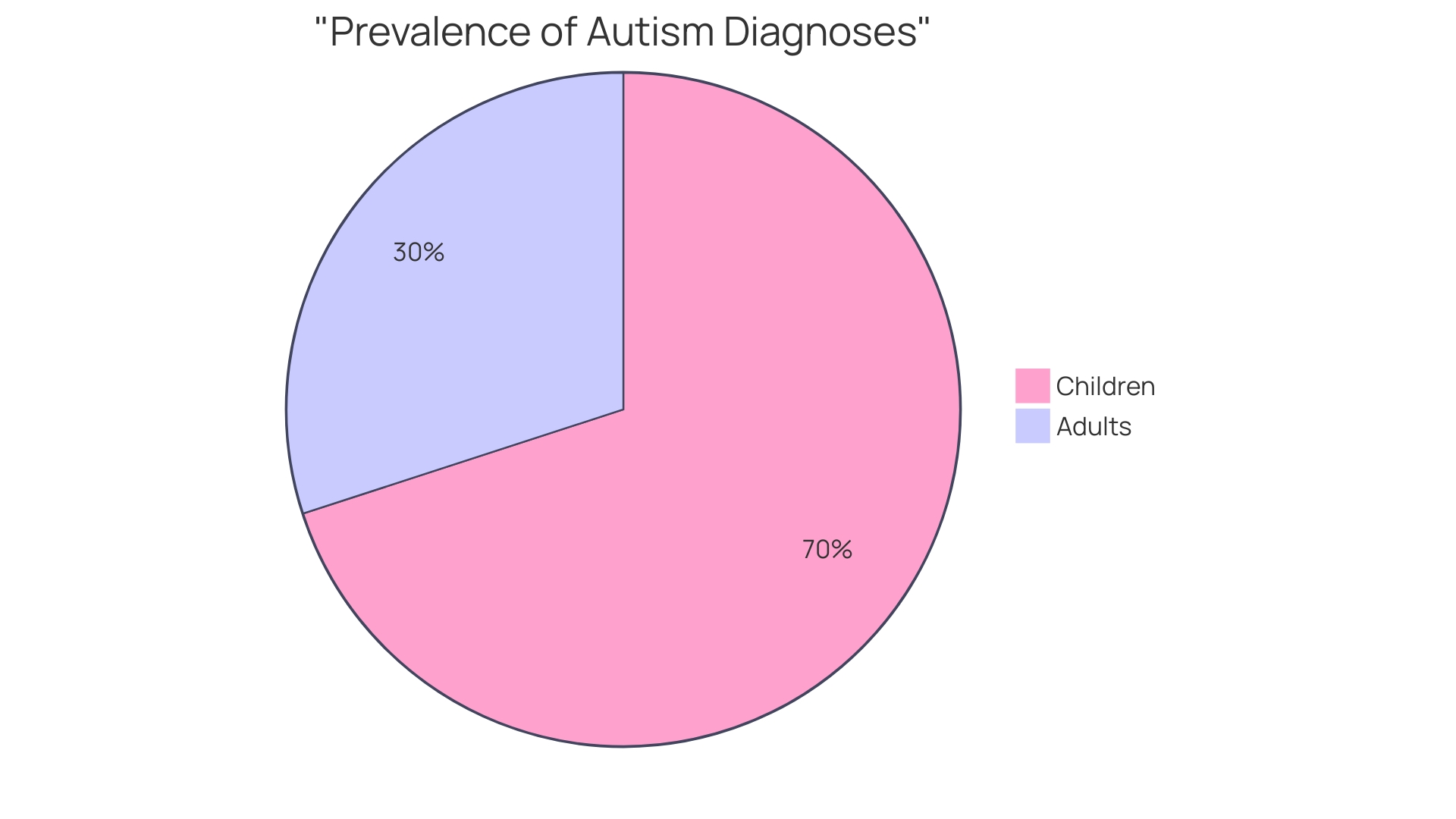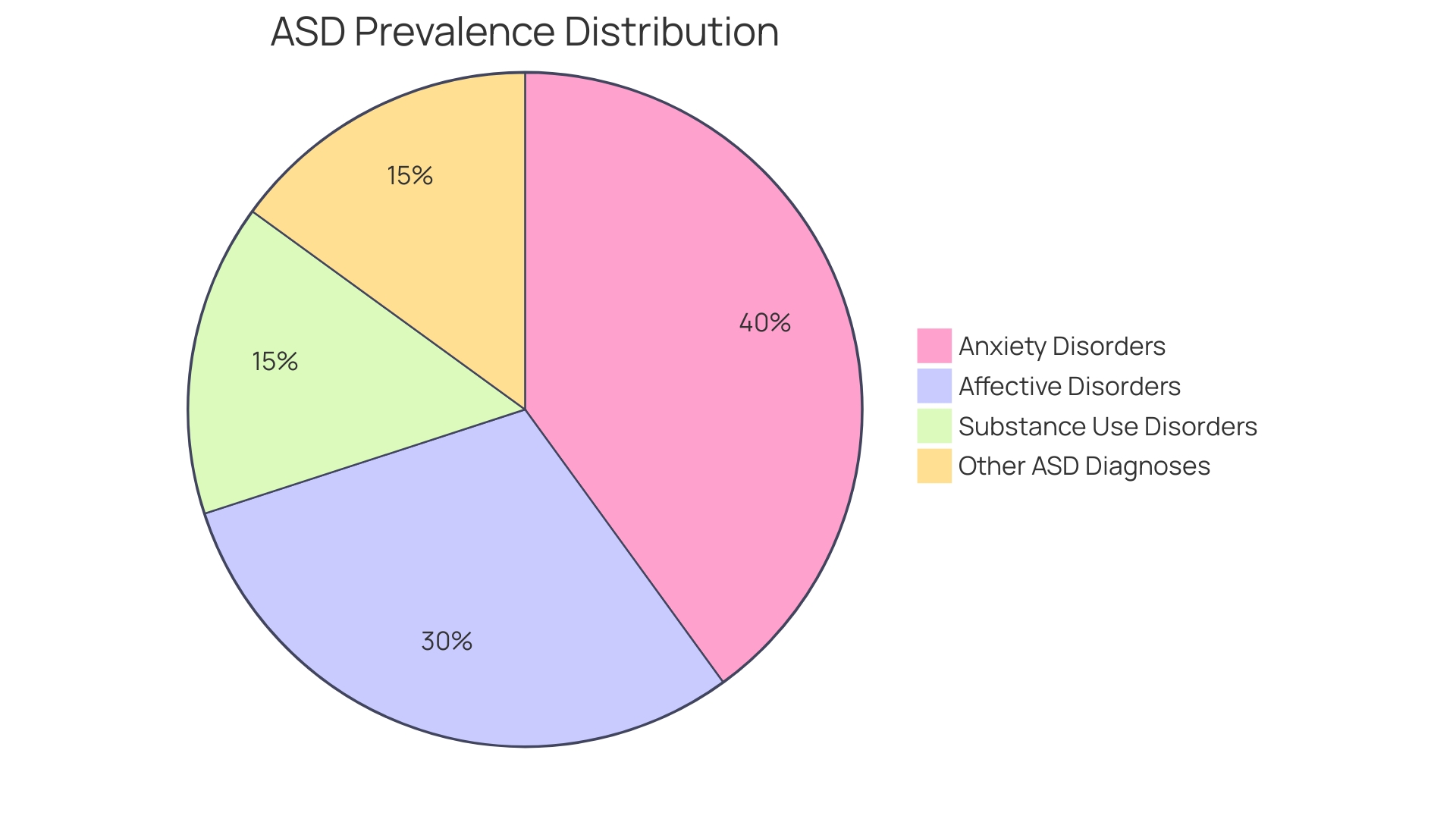Introduction
Autism Spectrum Disorder (ASD) encompasses a variety of challenges in behavior, social skills, and communication that individuals face. The condition manifests uniquely in each person and is lifelong. While friends, teachers, co-workers, and strangers may not fully understand the complexities of ASD, recognizing its impact is crucial for supporting those affected.
In this article, we will delve into the core characteristics of autism, the signs in adults and across gender lines, the challenges faced in daily life and social situations, as well as the importance of diagnosis and support. By gaining a comprehensive understanding of autism and embracing neurodiversity, we can create a more inclusive society that values the contributions and well-being of all its members.
Understanding Autism
Autism Spectrum Disorder (ASD) includes a range of difficulties in behavior, social skills, and communication that people face. The condition manifests uniquely in each person and is lifelong. While friends, teachers, co-workers, and strangers may not fully understand the complexities of ASD, recognizing its impact is crucial for supporting those affected. ASD isn't attributed to a single cause; rather, it's believed to arise from variations in brain structure or function. Brain scans reveal differences in the shape and structure of brains in individuals with a specific developmental condition compared to neurotypical development. Despite extensive research, the exact origins remain elusive, though genetics and heredity are key factors under investigation. It's essential to dispel the myths around autism—vaccines, parenting styles, or nutrition are not causes of ASD.
Understanding ASD is vital, and recent initiatives like the federal advisory committee IACC are making strides in research and services coordination. The IACC includes a diverse group of stakeholders, including autistic adults, parents, and researchers, all dedicated to making progress in the field. Moreover, innovative studies, like those at The Center for Discovery, are utilizing AI and machine learning to transform complex datasets into actionable insights. This could revolutionize our ability to predict behaviors and improve the lives of those with ASD.
High-functioning individuals with a subset of ASD are characterized by milder symptoms and often higher intellectual abilities. It's not an official medical diagnosis but is used to describe those on the spectrum with less severe challenges. Individuals with high-functioning ASD may have fewer speech and communication difficulties but still face significant social and sensory challenges. Recognizing the range of differences within the spectrum of individuals with autism is crucial for providing tailored support and interventions that maximize positive outcomes across the lifespan.
Understanding the Core Characteristics of Autism
Autism spectrum disorder (ASD) manifests as a broad range of conditions that impact behavior, social skills, and communication. Comprehending the core features of ASD is essential for identifying its indications in people. These include difficulties with social communication and interaction, such as trouble interpreting and responding to social cues, impaired nonverbal communication abilities, and challenges in forming and sustaining relationships.
For instance, nuances in speech, such as prosody—the employment of pitch, rhythm, volume, and timing to express significance—can be especially difficult for individuals with ASD to comprehend. This is because their brains may struggle to process the nuanced variations in speech patterns, as revealed by research from the University of Rochester. The ability to differentiate a question from a statement or to detect emotions like excitement or sarcasm relies heavily on these vocal inflections.
Moreover, understanding social communication extends to recognizing emotional expressions. Research on the genuineness of smiles shows that individuals with autism spectrum disorder may find it more challenging to differentiate between sincere and posed smiles. This is partly because genuine smiles involve involuntary activation of eye muscles, creating 'crow's feet,' a detail that can be subtle for those on the spectrum.
By understanding the complex nature of communication challenges encountered by individuals with ASD, systems can be more effectively customized. Utilizing tools such as Makaton or the Picture Exchange Communication System, which are recommended by the United Kingdom’s National Health Service, can aid in enhancing communication. These resources, along with the guidance of speech and language therapists, can offer significant support for those with a developmental disorder, helping them navigate the complexities of social interaction and fostering more meaningful connections.

Social Interaction and Communication Signs
Individuals with a particular condition often experience unique challenges in social interactions and communication. These challenges can manifest in various ways, such as difficulty with starting or maintaining conversations, less frequent eye contact, and a tendency to engage in solitary activities. Furthermore, interpreting and using nonverbal cues, like gestures and facial expressions, can be particularly challenging. This nuanced understanding of social cues is crucial in an environment that values communication skills as a significant factor in professional success. Nevertheless, conventional measures of communication, which prioritize consistent eye contact, verbal expression, and specific facial gestures, may not cater to the varied communication styles of people with autism.
It is essential to acknowledge that every individual with a unique set of abilities, interests, and methods of information processing. For example, research conducted at the University of Geneva discovered that the developmental path of attention in children with autism varies from that of their peers, highlighting the significance of early interventions customized to specific requirements. In the workplace, fostering an inclusive environment means valuing straightforward, organized communication and avoiding ambiguity that can lead to misunderstandings. Lists, step-by-step instructions, and written summaries of discussions can be incredibly helpful.
Furthermore, societal views of social connections among people with individuals on the autism spectrum are changing. Braxton Hartman, a graduate student with a neurodevelopmental disorder, advocates for a shift away from viewing these differences solely as deficits, suggesting that individuals with this condition may have unique advantages, such as being less influenced by others in unethical situations. His perspective challenges the traditional deficit mindset and encourages a more nuanced understanding of autism in social contexts.
In general, it is crucial to address the condition characterized by difficulties in social interaction and communication with a focus on personalization and assistance, acknowledging the intrinsic worth of varied ways of communicating and the possible advantages they can offer in different situations.

Restricted and Repetitive Behaviors and Interests (RRBIs)
Autism is characterized not only by challenges in social interaction and communication but also by certain patterns of behavior that are repetitive and restrictive. These behaviors—ranging from repeated movements to unwavering routines and specific, sometimes intense, interests—offer comfort and consistency to individuals with a developmental disorder, creating a sense of stability in a world that can often feel unpredictable.
Understanding the basis of these behaviors is crucial. While no single cause for the condition has been identified, research indicates that brain structure and function play a significant role. Brain scans have revealed differences in the brains of individuals with a certain neurological condition when compared to those of neurotypical individuals. These variations in brain structure are believed to influence the characteristic behaviors of individuals on the autism spectrum.
Recent advancements underscore the importance of early diagnosis and intervention. The DSM-5, a critical diagnostic tool, outlines that the fundamental characteristics of this developmental disorder should be present from early childhood, although they may not become fully apparent until a child faces social challenges that exceed their coping abilities. Moreover, sometimes these behaviors are masked as children learn strategies to cope with their environment.
Cutting-edge research at The Center for Discovery in New York has utilized artificial intelligence and machine learning, interpreting extensive data to predict significant behaviors in individuals with autism spectrum disorder. This strategy aims to proactively tackle actions before they happen, reducing their influence on the people and those nearby.
The field of research and intervention for individuals with autism has evolved significantly, with a growing emphasis on respect for people with autism. Ethical guidelines are strictly followed in studies, ensuring all necessary approvals are in place and participant confidentiality is maintained. At the heart of this ethical approach is the acknowledgment that interventions and research must respect and uphold individuals with autism, as emphasized by the autism community itself.
These insights into repetitive behaviors and underlying causes not only inform our understanding but also guide interventions and support strategies, ultimately aiming to enhance the quality of life for those on the spectrum.
Signs of Autism in Adults
ASD is a lifelong neurodevelopmental condition, and while it is most often identified in children, adults may also be diagnosed with ASD. Being diagnosed with adult-onset neurodevelopmental disorder can provide a feeling of relief and self-awareness, particularly for individuals who have experienced a sense of being unique or not fitting in throughout their lifetime. Recognizing signs such as difficulties with social interaction, an intense need for routine, or heightened sensory sensitivities can be a starting point for many adults in their journey towards an autism diagnosis. However, not everyone chooses to seek a formal diagnosis due to the challenges and inconclusiveness often associated with the medical testing process. In fact, within the autistic and neurodivergent communities, there is a significant openness to self-diagnosis, acknowledging the personal insights individuals gain about themselves.
For those considering whether to pursue a diagnosis, it's essential to weigh the personal benefits against the potential hurdles. An official diagnosis can sometimes aid in accessing assistance and services, but it's not always necessary for everyone. For instance, Heather Florio, who was diagnosed at the age of 41, found that understanding her autism was transformative and encouraged others to explore the possibility of being on the spectrum. The recognition of one's neurodiversity can lead to greater self-acceptance and tailored support, enhancing life quality.
In the wider healthcare field, efforts like the Adult Autism Health Resources project are striving to enhance care for adults with autism. This includes educating clinicians and caregivers about the needs of the adult population with autism, many of whom may have gone undiagnosed or misunderstood for years. With increasing awareness, there is also an increase in the recognition that individuals with autism, irrespective of when they were diagnosed, should receive high-quality medical care and assistance, similar to their neurotypical counterparts.

Gender Differences in Autism Signs
Autism, a condition with diverse manifestations, can present unique challenges when it comes to diagnosis, particularly across gender lines. The subtleties in how autism presents itself in females, such as nuanced social interactions, variations in repetitive behaviors, and distinct sensory experiences, can lead to underdiagnosis or misdiagnosis. This complexity is compounded by the tendency of females to mask symptoms, such as maintaining eye contact or engaging in conversation, which can obscure the underlying condition. As a result, many females with autism may navigate life without the support and understanding they need.
Furthermore, current discoveries emphasize the significance of acknowledging gender diversity within the condition, advocating for a deviation from universal diagnostic criteria. The intricacies of emotional regulation, body language interpretation, and self-harming behaviors like eating disorders further illustrate the spectrum of autistic presentations. These insights encourage a more nuanced approach to diagnosis, emphasizing individualized assessments over traditional methods.
The importance of precise and early detection of the condition is emphasized by organizations like The Autism Community in Action, which offers assistance to thousands of families and advocates for improvements in diagnostic tools. With evidence indicating better outcomes from early behavioral therapy, the need for a diagnostic method that can adapt to the unique expressions of autism, including those influenced by gender, has never been more critical.
Sensory Differences and Sensitivities
Autism spectrum disorder (ASD) presents a variety of challenges, not least of which are the sensory differences that many individuals experience. These differences often manifest as heightened sensitivities to environmental stimuli such as sound, light, textures, and odors. Additionally, there can be difficulties in processing and filtering sensory information. For those with ASD, the world can be an overwhelming tapestry of sensory input that needs to be managed with care.
A developmental psychology researcher, Lynn Perry, has emphasized the importance of understanding these unique sensory experiences to support language development and social interactions. This aligns with findings that early behavioral therapy, following a timely diagnosis, can lead to significantly better outcomes for children with autism.
The lived experiences of children with autism highlight the need for environments that are tailored to their sensory needs. Research employing a systematic review of qualitative studies has begun to unpack these experiences. By coding data from interviews and focus groups with autistic children, researchers are developing descriptive and analytical themes that shed light on their sensory world.
The TACA organization highlights that the condition affecting children is manageable and emphasizes the importance of an early diagnosis. Innovative companies like NeuroQure are aiming to diagnose ASD as early as a few weeks after birth, reducing the years it often takes to reach a diagnosis.
In brief, a thorough comprehension of the sensory sensitivities in people with ASD is not only a clinical worry, but a vital measure in promoting an inclusive society that acknowledges and assists the varied requirements of all its members.
Challenges in Daily Life and Social Situations
Navigating life with autism involves embracing a unique set of social, communicative, and behavioral patterns that don't always align with conventional expectations. For many, this can mean facing hurdles in social engagement, where interactions can be misinterpreted, leading to a sense of loneliness or misunderstanding. Changes in daily routines or unexpected sensory stimuli can also pose significant challenges, requiring resilience and flexibility. Understanding these experiences is crucial to fostering inclusivity and empathy within our communities.
In the domain of professional interactions, customizing approaches to meet the needs of individuals with autism can be transformative. For instance, adapting interview techniques can significantly improve the experience for both interviewees and professionals, highlighting the importance of accommodating neurodiversity in all realms of interaction.
The reality for many autistic individuals is one of adaptation and 'compensation'—employing hidden strategies to navigate a world that isn't tailored to their innate way of being. Acknowledging the strengths and abilities that come with the condition, such as the remarkable capacity to adapt to a non-autistic world, is as important as understanding the challenges.
Statistics reveal that a significant portion of the population, 1 in 45 adults in the U.S., are diagnosed with Autism Spectrum Disorder (ASD). Yet, many adults might live without a diagnosis, unaware that their life experiences may be connected to a condition. Enhanced consciousness and comprehension of the manifestations of autism can result in improved assistance and acknowledgement of undiagnosed people.
Employment statistics also shed light on the disparities faced by individuals with autism spectrum disorder. While many aspire to work, only about 30% of working-age individuals with autism are employed, compared to 80% of non-disabled people. Addressing this gap requires a collective endeavor to comprehend and assist the distinct abilities and requirements of autistic individuals in the workforce.
By acknowledging the full spectrum of neurodiversity, from its challenges to its strengths, we can create a more inclusive society that values the contributions and well-being of all its members.

The Importance of Diagnosis and Support
Early identification of individuals with this condition is crucial for obtaining necessary assistance and interventions, as it opens up opportunities for early intervention approaches that have been proven to significantly improve results. Awareness and recognition of the signs of this condition are therefore imperative for parents, caregivers, and professionals. By obtaining a professional evaluation at the first signs, the necessary aid can be provided, enabling individuals with autism spectrum disorder to flourish and utilize their abilities to the fullest.
Autism Spectrum Disorder (ASD) is a complex neurological condition, marked by variations in brain development that impact communication and behavior. With the neurodiversity movement advocating for person-centered, strengths-based care, it's seen as a natural brain variation rather than a disorder needing a cure. However, the broad spectrum of characteristics and abilities means it presents with diverse symptoms, and it is found across all ethnic, racial, and socioeconomic groups. Despite the lack of a cure, with the right support, people with autism can lead fulfilling lives.
The significance of early diagnosis is highlighted by research which suggests that identifying signs of the condition as early as 12 months can greatly enhance an individual's path. Autism NZ chief executive Dane Dougan emphasizes that the sooner children with autism are diagnosed and supported, the better their life outcomes. This is critical given that the mental health system often lacks adequate training on autism and that access to services is a significant barrier.
Initiatives such as the Adult Autism Health Resources project led by Harvard Medical School aim to educate and drive meaningful change in healthcare systems for individuals with autism spectrum disorder, who often lose access to many services after high school. The project emphasizes the importance of providing high-quality medical care for people with autism across their entire lives.
Backing this up, statistics show that people with autism experience health disparities, which can result in early death if not adequately addressed. Providing timely and appropriate support can lead to healthier, longer lives for those on the spectrum. These insights highlight the urgency of both early and ongoing intervention, and the necessity for informed healthcare systems to adapt and cater to the needs of autistic individuals across the lifespan.
Conclusion
In conclusion, understanding Autism Spectrum Disorder (ASD) is crucial for supporting individuals facing challenges in behavior, social skills, and communication. By recognizing the core characteristics of autism, such as difficulties in social interaction and communication, as well as repetitive and restrictive behaviors, we can provide tailored support and interventions to enhance their well-being.
Autistic individuals often face unique challenges in social interactions and communication. Embracing their diverse communication styles and fostering an inclusive environment that values straightforward communication can help them form meaningful connections.
Autism can be diagnosed in both children and adults. Recognizing the signs of autism in adults and providing support and understanding can be transformative for those who have felt different or out of place throughout their lives. Efforts are underway to improve care and raise awareness about the unique needs of autistic adults.
Gender differences in autism signs pose challenges in diagnosis, particularly for females. Advocating for individualized assessments and acknowledging the spectrum of autistic presentations is crucial for accurate identification and support.
Sensory differences and sensitivities are common in individuals with autism. Understanding and accommodating their unique sensory experiences can support language development and social interactions.
Navigating daily life and social situations with autism requires embracing unique patterns of social, communicative, and behavioral interactions. Recognizing the strengths and abilities that come with autism and creating an inclusive society can value the contributions and well-being of all its members.
Early diagnosis of autism is pivotal in providing essential supports and interventions. By recognizing the signs and providing timely and appropriate support, we can improve outcomes and address health inequalities faced by individuals with autism.
In summary, by understanding autism and embracing neurodiversity, we can create a more inclusive society that values the contributions and well-being of all its members. Tailored support and interventions are essential for individuals with autism to thrive and lead fulfilling lives.




